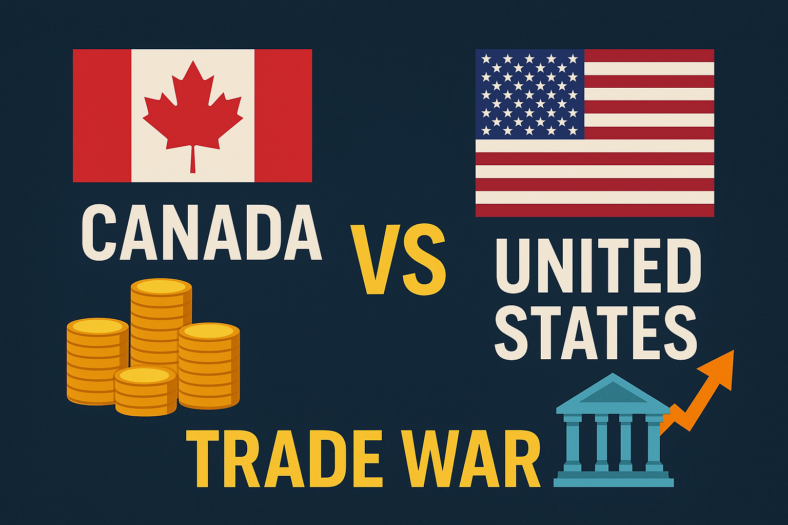When it comes to embarking on the journey of purchasing your first home in Canada, one crucial aspect to consider is choosing the right savings account to help you reach your goal. With a plethora of options available, it’s essential to identify the best first home savings account that aligns with your financial needs and aspirations. From competitive interest rates to favorable terms and accessibility, the ideal account can significantly impact your ability to accumulate the necessary funds for your dream home. In this comprehensive guide, we’ll explore the top contenders in the Canadian market, delving into their features, benefits, and considerations to empower you in making an informed decision on your path to homeownership.
Types of FHSAs
First Home Savings Accounts (FHSAs) come in various types, each tailored to meet different financial needs and preferences. Understanding the different types can help you choose the one that aligns best with your goals. Here are some common types of FHSAs:
High-Interest Savings Accounts (HISAs): These accounts offer a competitive interest rate, allowing your savings to grow faster over time. HISAs are often flexible, with no minimum balance requirements and easy access to funds, making them a popular choice for first-time homebuyers looking to maximize their savings while maintaining liquidity.
Tax-Free Savings Accounts (TFSAs): TFSA accounts provide a tax-efficient way to save for various financial goals, including purchasing your first home. Contributions to a TFSA are made with after-tax dollars, but any investment growth, interest, or dividends earned within the account are tax-free. This can result in significant savings over time, making TFSA a valuable option for long-term savings towards your first home.
Registered Retirement Savings Plans (RRSPs): While primarily designed for retirement savings, RRSPs offer a unique advantage for first-time homebuyers through the Home Buyers’ Plan (HBP). The HBP allows you to withdraw up to $35,000 from your RRSP ($70,000 for couples) tax-free to use towards the purchase or construction of your first home, provided certain conditions are met. Repayment of the withdrawn amount is required over a specified period, making RRSPs a strategic option for those looking to leverage their retirement savings to accelerate their homeownership journey.
Specialized First Home Savings Accounts: Some financial institutions offer specialized FHSAs explicitly designed to help individuals save for their first home. These accounts may come with unique features such as bonus interest rates, government incentives, or specific eligibility criteria tailored to first-time homebuyers. While these accounts may offer attractive benefits, it’s essential to carefully review the terms and conditions to ensure they align with your financial goals and circumstances.
By understanding the different types of FHSAs available, you can select the account that best suits your needs, preferences, and long-term financial objectives on the path to homeownership.
What is an FHSA
An FHSA, or First Home Savings Account, is a specialized savings account designed to help individuals save money specifically for purchasing their first home. These accounts are often offered by banks, credit unions, and other financial institutions and may come with unique features and benefits tailored to first-time homebuyers.
Overall, an FHSA provides a dedicated and structured way for individuals to save towards their goal of homeownership, offering potential financial advantages and support along the journey to purchasing their first home.
Common FHSA fees
While FHSA (First Home Savings Account) fees can vary depending on the financial institution and the specific terms of the account, there are several common fees that you may encounter:
Account Maintenance Fee: Some FHSA providers may charge a monthly or annual fee for maintaining the account. This fee is typically charged regardless of the account balance.
Transaction Fees: Certain transactions, such as withdrawals, transfers, or excessive transactions beyond a specified limit, may incur fees. These fees can vary in amount and frequency.
Overdraft Fees: If you attempt to withdraw more funds from your FHSA than are available in the account, you may incur an overdraft fee. This fee can be charged for each transaction that exceeds the available balance.
Excess Contribution Fees: Contributions to an FHSA may be subject to annual limits set by the government or the financial institution. If you exceed these limits, you may face excess contribution fees or penalties.
Closure or Transfer Fees: Closing or transferring your FHSA to another account or financial institution may incur fees. These fees can vary and may be charged to cover administrative costs.
Inactive Account Fees: If your FHSA remains inactive for a certain period, you may be charged an inactive account fee. This fee is intended to encourage account activity and may be charged monthly or annually.
Foreign Transaction Fees: If you use your FHSA debit card or make transactions in a foreign currency, you may incur foreign transaction fees. These fees are typically a percentage of the transaction amount.
ATM Fees: Using an ATM that is not affiliated with your FHSA provider may result in ATM fees. These fees can be charged by both the ATM owner and your financial institution.
It’s essential to carefully review the fee schedule and terms and conditions provided by your FHSA provider to understand the fees associated with your account fully. Additionally, consider comparing fees across different providers to ensure you choose an FHSA with reasonable fees that align with your financial needs and preferences.
Common FHSAs features
First Home Savings Accounts (FHSAs) typically offer a range of features tailored to help individuals save for their first home. Here are some common features you might find:
Competitive Interest Rates: FHSAs often provide competitive interest rates to help account holders maximize the growth of their savings over time. These rates may be higher than those offered by standard savings accounts.
Tax Benefits: Depending on the country and specific regulations, FHSAs may offer tax benefits or incentives to encourage saving for a first home. These benefits could include tax deductions on contributions or tax-free growth of savings.
Government Incentives: Some governments offer incentives or matching contributions to individuals saving for their first home through an FHSA. These incentives can provide an additional boost to savings efforts.
Flexible Contribution Options: FHSAs typically allow flexible contribution options, enabling account holders to contribute funds regularly or periodically according to their financial situation and savings goals.
Accessibility: While the primary purpose of an FHSA is to save for a first home, most accounts offer accessibility features that allow account holders to access their funds when needed. This could include online and mobile banking, ATM access, and electronic transfers.
No or Low Fees: Many FHSAs waive monthly maintenance fees or offer accounts with minimal fees to help account holders maximize their savings without being burdened by excessive charges.
Goal Tracking: Some FHSAs come with tools or features to help account holders track their progress towards their savings goal. This could include online calculators, progress meters, or personalized savings plans.
Educational Resources: Financial institutions may provide educational resources or guidance to help first-time homebuyers navigate the process of saving for and purchasing their first home. This could include articles, seminars, or consultations with financial advisors.
Portability: In some cases, FHSAs may be portable, allowing account holders to transfer their savings to a different financial institution or to a different type of savings account without penalty.
Specialized Withdrawal Conditions: While the primary purpose of an FHSA is to save for a first home, some accounts may allow withdrawals for certain qualifying expenses related to homeownership, such as down payments, closing costs, or renovations.
By offering these features, FHSAs aim to provide a dedicated and effective savings vehicle for individuals embarking on the journey of purchasing their first home.
Why should you choose an FHSA
Choosing a First Home Savings Account (FHSA) can be a strategic move for several reasons, tailored to your financial goals and circumstances:
Tax Benefits: Many countries offer tax advantages for contributions made to FHSAs. These benefits can include tax deductions on contributions or tax-free growth of savings. By taking advantage of these tax incentives, you can maximize the growth of your savings over time.
Government Incentives: Some governments provide incentives or matching contributions to individuals saving for their first home through an FHSA. These incentives can provide an additional boost to your savings efforts, helping you reach your goal faster.
Higher Interest Rates: FHSAs often offer competitive interest rates, allowing your savings to grow faster compared to traditional savings accounts. This higher interest rate can help you accumulate the necessary funds for your first home more quickly.
Focused Savings Goal: By opening an FHSA, you establish a dedicated savings vehicle specifically for your first home. Having a focused savings goal can help you stay motivated and disciplined in your savings efforts, increasing the likelihood of achieving your homeownership dream.
Accessibility: While the primary purpose of an FHSA is to save for a first home, most accounts offer accessibility features that allow you to access your funds when needed. This flexibility ensures that your savings remain accessible in case of emergencies or unforeseen expenses.
Financial Discipline: By committing to regular contributions to your FHSA, you cultivate good saving habits and financial discipline. This can have long-term benefits beyond your first home purchase, helping you build a solid financial foundation for the future.
Potential Investment Opportunities: Depending on the FHSA provider and account options, you may have the opportunity to invest your savings in a variety of financial instruments, such as mutual funds or stocks, to potentially earn higher returns.
Peace of Mind: Knowing that you have a dedicated savings account specifically earmarked for your first home can provide peace of mind and reduce financial stress. You can feel confident that you are taking concrete steps towards achieving your homeownership goal.
Ultimately, choosing an FHSA allows you to leverage tax advantages, government incentives, and higher interest rates to accelerate your savings journey and realize your dream of homeownership more efficiently. It provides a structured and focused approach to saving for your first home, empowering you to take control of your financial future.
Benefits and downsides of FHSAs
First Home Savings Accounts (FHSAs) offer several benefits and downsides, each of which should be carefully considered when deciding whether to open one:
Benefits:
Tax Advantages: FHSAs often come with tax benefits, such as tax deductions on contributions or tax-free growth of savings. These tax advantages can help maximize the growth of your savings over time.
Government Incentives: Some governments provide incentives or matching contributions to individuals saving for their first home through an FHSA. These incentives can provide an additional boost to your savings efforts, helping you reach your goal faster.
Higher Interest Rates: FHSAs typically offer competitive interest rates compared to traditional savings accounts, allowing your savings to grow faster. This higher interest rate can help you accumulate the necessary funds for your first home more quickly.
Focused Savings Goal: Opening an FHSA establishes a dedicated savings vehicle specifically for your first home. Having a focused savings goal can help you stay motivated and disciplined in your savings efforts, increasing the likelihood of achieving your homeownership dream.
Accessibility: While the primary purpose of an FHSA is to save for a first home, most accounts offer accessibility features that allow you to access your funds when needed. This flexibility ensures that your savings remain accessible in case of emergencies or unforeseen expenses.
Downsides:
Limited Withdrawal Flexibility: FHSAs may have restrictions on withdrawals or penalties for early withdrawals, which can limit your access to funds. This lack of flexibility may not be suitable for individuals who anticipate needing access to their savings for other purposes.
Potential Loss of Benefits: If you do not use the funds in your FHSA for eligible home-related expenses, you may lose out on any tax benefits or government incentives associated with the account. This risk can be a downside if your homeownership plans change or if you are unable to purchase a home within a certain timeframe.
Lower Returns Compared to Investments: While FHSAs offer competitive interest rates, the returns may be lower compared to other investment options, such as stocks or mutual funds. Individuals with a higher risk tolerance or longer time horizon may prefer alternative investment strategies to potentially earn higher returns.
Account Fees: Some FHSAs may come with fees, such as account maintenance fees or transaction fees, which can eat into your savings over time. It’s essential to carefully review the fee schedule and terms and conditions of the account to understand any potential costs.
Dependent on Government Policies: The tax advantages and government incentives associated with FHSAs are subject to government policies and regulations, which may change over time. This uncertainty can affect the overall attractiveness and benefits of the account.
When considering whether to open an FHSA, it’s crucial to weigh these benefits and downsides carefully and assess how well the account aligns with your financial goals, risk tolerance, and individual circumstances. Consulting with a financial advisor can also provide valuable insights and guidance in making an informed decision.
How to choose an FHSA
Choosing the right First Home Savings Account (FHSA) is an important decision that requires careful consideration of several factors. Here’s a step-by-step guide to help you choose the FHSA that best suits your needs:
Understand Your Financial Goals: Start by clarifying your financial goals, particularly your goal of purchasing a first home. Determine how much you need to save, your preferred timeline for achieving this goal, and any specific features or benefits you prioritize in an FHSA.
Research FHSA Providers: Research financial institutions that offer FHSAs in your region. Compare their FHSA offerings, including interest rates, fees, government incentives, and account features. Look for reputable institutions with a track record of providing reliable and customer-friendly services.
Evaluate Interest Rates: Compare the interest rates offered by different FHSAs. Look for accounts that offer competitive rates to maximize the growth of your savings over time. Keep in mind that some accounts may offer introductory rates that may change after a certain period.
Consider Tax Benefits: Investigate the tax benefits associated with each FHSA option. Depending on your country’s tax laws, FHSA contributions may be tax-deductible, and savings growth may be tax-free. Choose an account that provides the most favorable tax advantages for your financial situation.
Assess Government Incentives: Check if there are any government incentives or matching contributions available for FHSA holders in your country. These incentives can provide an additional boost to your savings efforts, helping you reach your homeownership goal faster.
Review Account Fees: Understand the fee structure of each FHSA, including account maintenance fees, transaction fees, and any other charges. Choose an account with minimal fees to avoid unnecessary costs that could eat into your savings over time.
Evaluate Accessibility: Consider the accessibility features of each FHSA, such as online banking, mobile app access, ATM availability, and withdrawal options. Choose an account that offers convenient access to your funds while maintaining the necessary restrictions to support your savings goal.
Read the Fine Print: Carefully review the terms and conditions of each FHSA, including any eligibility requirements, withdrawal restrictions, and penalties for early withdrawals. Ensure that you fully understand the account’s terms before opening it to avoid any surprises later on.
Seek Advice if Needed: If you’re unsure about which FHSA to choose or need assistance in understanding complex financial terms, consider seeking advice from a financial advisor. A professional advisor can provide personalized recommendations based on your unique financial situation and goals.
Monitor and Adjust: Once you’ve chosen an FHSA, regularly monitor your account and track your progress towards your savings goal. Be prepared to adjust your savings strategy if needed based on changes in your financial situation or market conditions.
By following these steps and conducting thorough research, you can select the FHSA that best aligns with your financial goals, preferences, and circumstances, setting you on the path towards achieving your dream of homeownership.
How to open an FHSA
Opening a First Home Savings Account (FHSA) typically involves several steps, but the exact process may vary depending on the financial institution and country-specific regulations. Here’s a general guide on how to open an FHSA:
Research Financial Institutions: Start by researching financial institutions that offer FHSAs in your region. Compare their FHSA offerings, including interest rates, fees, and account features, to find the one that best suits your needs.
Gather Required Documents: Before opening an FHSA, you’ll need to gather certain documents, such as government-issued identification (e.g., driver’s license, passport), proof of address (e.g., utility bill, rental agreement), and your social security number or taxpayer identification number.
Visit a Branch or Apply Online: Depending on the financial institution, you may have the option to open an FHSA in person at a branch location or apply online through the institution’s website. If applying online, be prepared to provide scanned copies of your identification and other required documents.
Complete the Application Form: Whether applying in person or online, you’ll need to complete an application form for the FHSA. Provide accurate information, including your personal details, contact information, and any relevant financial information.
Fund the Account: Once your application is approved, you’ll need to fund the FHSA. This typically involves making an initial deposit into the account, which may vary depending on the financial institution’s requirements. You may also have the option to set up automatic contributions to the account from your regular income or other accounts.
Review and Sign Documents: Before finalizing the FHSA opening process, carefully review all documents provided by the financial institution, including the FHSA agreement, terms and conditions, and any disclosures. Once you’ve reviewed the documents and understand the account details, sign where required.
Receive Confirmation: After completing the FHSA opening process, you’ll receive confirmation of your account opening. This may include account details, such as your account number and routing information, as well as instructions on how to access your account online or through mobile banking.
Set Up Account Access: If applicable, set up online or mobile banking access for your FHSA. This may involve creating a username and password, setting up security questions, and enabling additional security features, such as two-factor authentication.
Start Saving: With your FHSA successfully opened, you can start saving towards your first home. Monitor your account regularly, track your progress towards your savings goal, and adjust your savings strategy as needed to stay on track.
Seek Assistance if Needed: If you encounter any difficulties or have questions about your FHSA, don’t hesitate to reach out to the financial institution’s customer service department or speak with a representative for assistance.
By following these steps, you can open an FHSA and begin your journey towards saving for your first home. Remember to choose an FHSA that aligns with your financial goals, preferences, and circumstances to maximize your savings efforts.
What are the contribution and withdrawal considerations for FHSAs?
Contribution and withdrawal considerations are important aspects to understand when it comes to managing a First Home Savings Account (FHSA). Here’s a breakdown of these considerations:
Contribution Considerations:
Contribution Limits: FHSAs typically have annual contribution limits imposed by the government or financial institution. These limits may vary depending on factors such as your country’s regulations and the specific terms of the FHSA.
Tax Benefits: Contributions made to an FHSA may be eligible for tax benefits, such as tax deductions or credits, depending on your country’s tax laws. Be aware of any tax implications associated with your contributions and consult with a tax advisor if needed.
Automatic Contributions: Setting up automatic contributions to your FHSA can help you stay disciplined in your savings efforts. Consider automating regular contributions from your paycheck or other accounts to ensure consistent savings growth over time.
Contribution Flexibility: Evaluate the flexibility of contributions to your FHSA. Some accounts may allow you to make one-time lump-sum contributions, while others may require regular periodic contributions.
Withdrawal Considerations:
Withdrawal Restrictions: FHSAs often have restrictions on withdrawals to ensure that funds are used for eligible home-related expenses. Withdrawals for non-qualifying expenses may incur penalties or loss of tax benefits.
Qualified Expenses: Understand which expenses qualify for withdrawals from your FHSA. Qualified expenses typically include down payments, closing costs, and certain home improvements or renovations. Non-qualified expenses may include general living expenses or non-home-related purchases.
Penalties for Non-Qualified Withdrawals: Be aware of any penalties or consequences associated with non-qualified withdrawals from your FHSA. Penalties may include tax implications, loss of tax benefits, or additional fees imposed by the financial institution.
Repayment Requirements: If you withdraw funds from your FHSA for eligible home-related expenses, some accounts may require you to repay the withdrawn amount within a certain timeframe. Failure to repay the amount as required may result in penalties or loss of benefits.
Timing of Withdrawals: Consider the timing of withdrawals from your FHSA in relation to your homebuying timeline. Plan your withdrawals strategically to ensure that funds are available when needed for your home purchase or related expenses.
Documentation Requirements: Keep records of all withdrawals from your FHSA and any related expenses to ensure compliance with tax regulations and account requirements. Proper documentation can help you avoid potential issues during tax filing or account audits.
Understanding these contribution and withdrawal considerations is essential for effectively managing your FHSA and maximizing its benefits in your journey towards homeownership. Be sure to review the terms and conditions of your FHSA carefully and consult with a financial advisor if you have any questions or concerns.
How does an FHSA work?
A First Home Savings Account (FHSA) is a specialized savings account designed to help individuals save money specifically for purchasing their first home. Here’s how an FHSA typically works:
Account Opening: To open an FHSA, you typically need to apply with a financial institution that offers these accounts. The application process may involve providing personal information, identification documents, and funding the account with an initial deposit.
Contribution: Once your FHSA is open, you can start making contributions to the account. Contributions can be made regularly or periodically, depending on your financial situation and savings goals. Some FHSA providers may impose contribution limits, which may vary depending on factors such as government regulations and account terms.
Tax Benefits: Contributions made to an FHSA may be eligible for tax benefits, such as tax deductions or credits, depending on your country’s tax laws. These tax benefits can help maximize the growth of your savings over time and accelerate your progress towards your homeownership goal.
Interest Accumulation: FHSAs typically earn interest on the funds deposited into the account. The interest rates offered by FHSA providers may vary, so it’s essential to compare rates and choose an account with competitive interest rates to maximize your savings growth.
Government Incentives: Some governments provide incentives or matching contributions to individuals saving for their first home through an FHSA. These incentives can provide an additional boost to your savings efforts, helping you reach your goal faster.
Withdrawal Restrictions: FHSAs often have restrictions on withdrawals to ensure that funds are used for eligible home-related expenses. Qualified expenses typically include down payments, closing costs, and certain home improvements or renovations. Non-qualified expenses may incur penalties or loss of tax benefits.
Home Purchase: Once you’ve accumulated sufficient funds in your FHSA and are ready to purchase your first home, you can withdraw the funds for eligible expenses. Be sure to follow the withdrawal guidelines and provide proper documentation to ensure compliance with account requirements and tax regulations.
Repayment Requirements (if applicable): If you withdraw funds from your FHSA for eligible expenses, some accounts may require you to repay the withdrawn amount within a certain timeframe. Failure to repay the amount as required may result in penalties or loss of benefits.
Account Management: Regularly monitor your FHSA, track your progress towards your savings goal, and adjust your savings strategy as needed. Keep records of all contributions, withdrawals, and related expenses to ensure compliance with account requirements and tax regulations.
By leveraging the tax benefits, competitive interest rates, and potential government incentives offered by FHSAs, individuals can effectively save for their first home and achieve their homeownership goals more efficiently. Be sure to review the terms and conditions of your FHSA carefully and consult with a financial advisor if you have any questions or concerns.
Who’s eligible for an FHSA
Eligibility criteria for First Home Savings Accounts (FHSAs) can vary depending on the country’s regulations and the specific terms of the account offered by financial institutions. However, there are some common eligibility requirements that individuals may need to meet to qualify for an FHSA. Here’s a general overview:
First-Time Homebuyers: FHSAs are typically designed for individuals who are purchasing their first home. To be eligible, you may need to meet the definition of a first-time homebuyer, which can vary but generally refers to someone who has not owned a principal residence within a specified period (e.g., three years) leading up to the purchase.
Residency: In many cases, individuals must be residents of the country where the FHSA is offered to be eligible for the account. Proof of residency, such as a government-issued identification or proof of address, may be required during the application process.
Age Requirements: Some FHSAs have age restrictions, requiring account holders to be of legal age to enter into a binding contract (typically 18 years or older). However, there may be variations in age requirements depending on the country and financial institution.
Income Limits: Certain FHSAs may have income limits or restrictions on who can contribute to the account. These limits may vary depending on factors such as household income, tax filing status, or participation in other government programs.
Use of Funds: FHSAs are intended for saving towards the purchase or construction of a first home. Eligible expenses typically include down payments, closing costs, and certain home improvements or renovations. Withdrawals for non-eligible expenses may incur penalties or loss of tax benefits.
Legal Requirements: Individuals opening an FHSA must comply with all legal requirements and regulations governing the account, including providing accurate information, adhering to contribution limits, and following withdrawal guidelines.
It’s essential to review the specific eligibility criteria and terms and conditions of the FHSA offered by your chosen financial institution to ensure that you meet all requirements before opening the account. If you have any questions or concerns about eligibility, consider reaching out to the financial institution or consulting with a financial advisor for guidance.
Alternatives to FHSA
Several alternatives to First Home Savings Accounts (FHSAs) exist, each offering different features, benefits, and considerations. Here are some common alternatives to consider:
Tax-Free Savings Accounts (TFSAs): TFSAs are versatile savings vehicles that allow individuals to save and invest money tax-free. While not specifically designed for first-time homebuyers, TFSAs offer flexibility in how funds are used, including saving for a down payment on a home. Contributions to TFSAs are made with after-tax dollars, and any investment growth, interest, or dividends earned within the account are tax-free.
Registered Retirement Savings Plans (RRSPs): RRSPs are retirement savings accounts that offer tax advantages for contributions made to the account. While primarily designed for retirement savings, RRSPs offer the Home Buyers’ Plan (HBP), which allows first-time homebuyers to withdraw up to $35,000 ($70,000 for couples) from their RRSPs tax-free to use towards the purchase or construction of a home. Repayment of the withdrawn amount is required over a specified period.
High-Interest Savings Accounts (HISAs): HISAs offer competitive interest rates and liquidity, making them suitable options for short-term savings goals such as a down payment on a home. While HISAs may not offer the tax benefits or government incentives of FHSAs, they provide flexibility in how funds are used and can be easily accessed when needed.
Investment Accounts: Investing in stocks, bonds, mutual funds, or exchange-traded funds (ETFs) can provide potential higher returns compared to traditional savings accounts. While investing carries inherent risks, it can be a viable option for individuals with a longer time horizon and a higher risk tolerance. Investment accounts offer flexibility in how funds are used and can be tailored to align with specific financial goals, including saving for a first home.
Employer-Sponsored Plans: Some employers offer savings or investment plans, such as employer-sponsored retirement accounts (e.g., 401(k) plans in the United States or Registered Pension Plans in Canada), employee stock purchase plans, or employer-matched savings programs. These employer-sponsored plans may offer tax advantages or employer contributions, providing additional opportunities to save for a first home.
Government Programs: Depending on your country of residence, there may be government programs or incentives available to assist first-time homebuyers. These programs could include grants, loans, or assistance with down payments or closing costs. Research available government programs in your area to explore potential options for homeownership assistance.
When considering alternatives to FHSAs, it’s essential to evaluate factors such as tax implications, investment options, liquidity, and eligibility requirements to choose the option that best aligns with your financial goals, preferences, and circumstances. Consulting with a financial advisor can also provide valuable insights and guidance in selecting the most suitable savings strategy for your first home purchase.
FAQs about the best FHSAs in Canada
A First Home Savings Account (FHSA) is a specialized savings account designed to help individuals save money specifically for purchasing their first home in Canada. These accounts typically offer competitive interest rates, tax benefits, and government incentives to accelerate savings growth.
Opening an FHSA in Canada offers several benefits, including tax advantages, competitive interest rates, and potential government incentives or matching contributions. These accounts provide a dedicated and efficient way to save for a first home while maximizing savings growth.
Eligibility criteria for FHSAs in Canada may vary depending on the financial institution and account terms. Generally, individuals must be first-time homebuyers, residents of Canada, and meet any age or income requirements specified by the account provider. Proof of eligibility, such as government-issued identification and proof of residency, may be required during the application process.
FHSAs in Canada may have annual contribution limits imposed by the government or financial institution. These limits can vary depending on factors such as the type of account, account holder’s age, and contribution history. It’s essential to review the specific contribution limits of the FHSA you’re considering to ensure compliance and maximize savings potential.
Withdrawals from an FHSA in Canada are typically tax-free if used for eligible home-related expenses, such as down payments, closing costs, and certain home improvements or renovations. However, non-qualified withdrawals may be subject to taxes, penalties, or loss of tax benefits. It’s important to follow the withdrawal guidelines and maintain proper documentation to ensure compliance with tax regulations.
Yes, many financial institutions in Canada allow individuals to transfer funds from their existing savings accounts to an FHSA. Transferring funds can help jumpstart your savings efforts and take advantage of the benefits offered by an FHSA, such as tax advantages and competitive interest rates. Be sure to inquire about any transfer procedures or requirements with your chosen financial institution.
Choosing the best FHSA in Canada involves considering factors such as interest rates, fees, tax benefits, government incentives, and account features. Compare FHSA offerings from different financial institutions, review their terms and conditions, and assess how well they align with your financial goals and preferences. Consulting with a financial advisor can also provide valuable guidance in selecting the most suitable FHSA for your first home savings journey.
In conclusion, navigating the world of First Home Savings Accounts (FHSAs) in Canada offers a pathway to achieving your dream of homeownership with strategic savings. Understanding the nuances of FHSAs, including eligibility criteria, tax benefits, contribution limits, and withdrawal considerations, is paramount. With the right FHSA, you can harness competitive interest rates, government incentives, and tax advantages to accelerate your savings journey towards purchasing your first home. By carefully considering your options, consulting with financial experts, and staying informed about the latest FHSA offerings, you can confidently embark on this exciting endeavor towards homeownership in Canada.




















